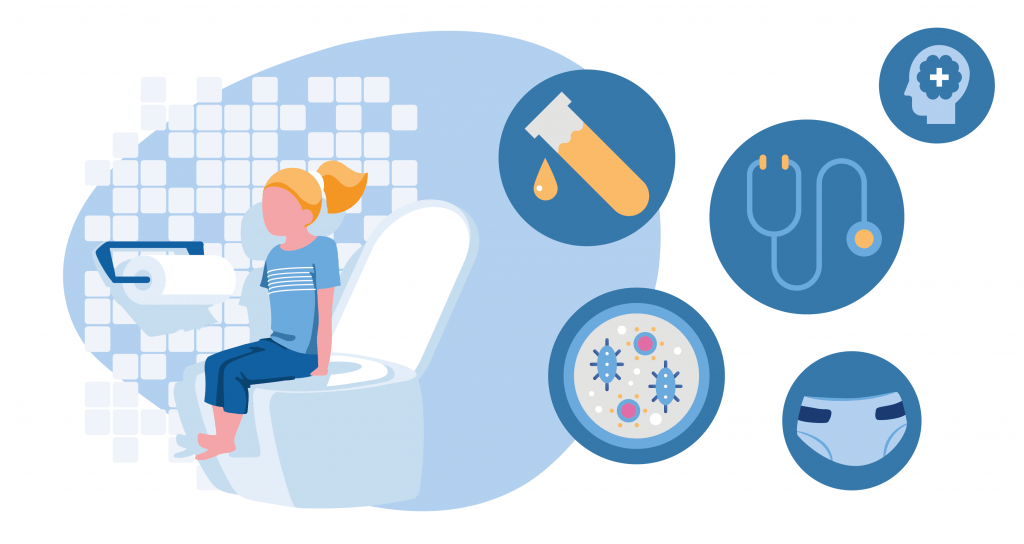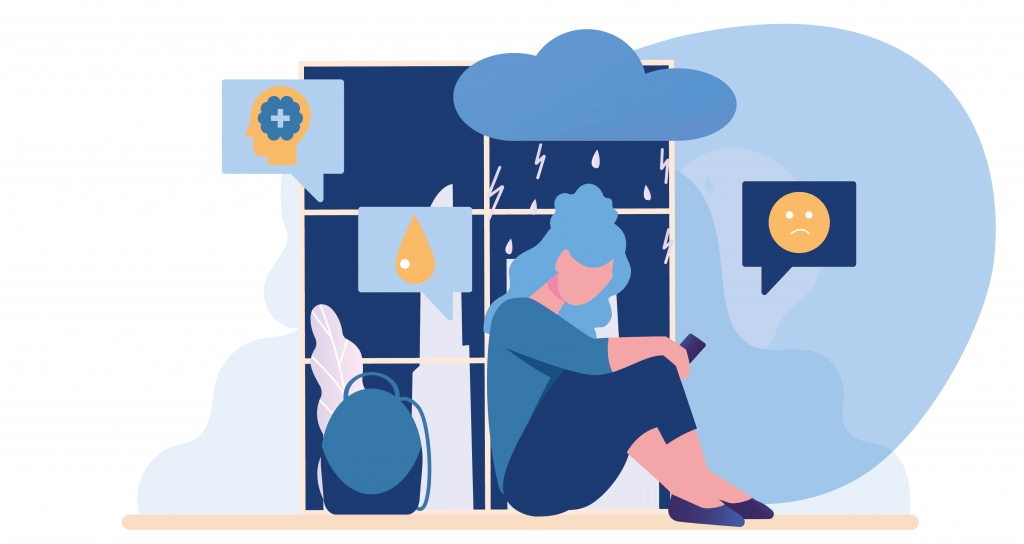Recurrent UTIs in children: their symptoms and how to manage them
Urinary tract infections are fairly common in children and usually not serious.1 By age five, about 8% of girls and 1-2% of boys will have experienced a UTI.2 However, some youngsters may experience reoccurring UTIs, defined as three or more urinary tract infections3. Here is an explanation of the signs, symptoms and management of recurrent UTIs in children.
Signs and symptoms of reoccurring UTIs in a child
A UTI is a microbial infection that affects the urinary tract (the bladder, urethra and kidneys).4 They can occur in people of any age and gender but are most common in children, due to toileting habits5, and women and girls, due to their shorter urethras6. The most common symptoms of urinary tract infections in children are:
- discomfort or crying when passing urine
- needing to go to the toilet frequently
- unexpectedly wetting themselves during the day or at night
- cloudy or strong smelling wee
- urine with blood in it
- tummy pain7
- high temperature
- vomiting
- appearing generally unwell (babies may be more irritable and not feed well)8
You should always see a healthcare professional if you suspect your child has a UTI, as there can be complications if left untreated.

Causes of frequent UTI in children
Recurring UTIs can have many causes in children, but some of the most common are:
- not drinking enough fluids9
- children “holding on” to their urine when they need to go
- children wiping incorrectly after using the toilet and introducing bacteria into the urethra
- constipation, which can put pressure on the bladder and prevent it from emptying properly
- babies getting faecal matter in their urethra after soiling their nappy (particularly if they wriggle during changes!)
- urine reflux – an uncommon condition where urine leaks back up from the bladder into the kidneys10
- urinary tract issues, such as kidney stones and partial blockages11
Managing recurrent UTI in children
Once your child has been diagnosed, it’s natural you’ll want to know how to manage it. In terms of managing a currently occurring UTI, your doctor may prescribe antibiotics. To keep your child comfortable during the healing process, you can try:
- making sure they drink plenty of fluids
- treating them with (liquid) paracetamol for fever and pain
- allowing them to rest as much as possible12
If your child is experiencing leaks with their UTI, continence products can be incredibly useful. The iD Junior range is specially designed to manage urinary incontinence in children.With pants suitable for ages 5 to 15, all the products are dermatologically tested, discreet and comfortable. They are ideal for managing both daytime and nocturnal wetting.
With regard to managing reocurring UTIs and decreasing their frequency, the above advice on staying hydrated also applies. In addition to this, you could:
- avoid constipation by making sure your child eats plenty of fibre
- make sure they urinate regularly13
- avoid using bubble bath
- avoid tight-fitting underwear
- encourage girls to wipe front to back after using the toilet14
- ask them to go to the toilet promptly15 and not “hold on” to urine

Recurrent UTIs in teens
For teens, diagnosis and management of UTIs are generally the same as with younger children. However, there are some other things to consider:
- if your daughter has periods, regularly changing tampons and towels can help to keep the area hygienic
- avoiding nylon underwear
- discourage your daughter from using ‘feminine hygiene sprays’16
- in older teenage girls who are sexually active, then urinating after intercourse may help prevent UTIs. Sexually transmitted diseases can also cause UTIs, or similar symptoms, so speak to your doctor about this17
As we’ve explored, urinary tract infections in children are fairly common and can reoccur, but we hope this article has shown you that they are perfectly manageable.

1 “Urinary tract infection (UTI) in children”, NHS Inform, 14 February 2020, Source: https://www.nhsinform.scot/illnesses-and-conditions/kidneys-bladder-and-prostate/urinary-tract-infection-uti-in-children
2 “Recurrent Urinary Tract Infections (UTIs) in Children, American Academy of Pediatrics, Source: https://www.healthychildren.org/English/health-issues/conditions/genitourinary-tract/Pages/Urinary-Tract-Infections-in-Teens.aspx
3 Ibid
4 “Urinary Tract Infections (UTIs), NHS, 18 November 2020, Source: https://www.nhs.uk/conditions/urinary-tract-infections-utis/
5 “Recurrent Urinary Tract Infections (UTIs) in Children, American Academy of Pediatrics, Source: https://www.healthychildren.org/English/health-issues/conditions/genitourinary-tract/Pages/Urinary-Tract-Infections-in-Teens.aspx
6 “Urinary Tract Infections (UTIs), NHS, 18 November 2020, Source: https://www.nhs.uk/conditions/urinary-tract-infections-utis/
7 “Children with Recurrent Urinary Tract Infection”, National Kidney Federation, Source: https://www.kidney.org.uk/children-with-recurrent-urinary-tract-infection
8 “Urinary Tract Infections (UTIs), NHS, 18 November 2020, Source: https://www.nhs.uk/conditions/urinary-tract-infections-utis/
9 “Recurrent Urinary Tract Infections (UTIs) in Children, American Academy of Pediatrics, Source: https://www.healthychildren.org/English/health-issues/conditions/genitourinary-tract/Pages/Urinary-Tract-Infections-in-Teens.aspx
10 “Urinary tract infection (UTI) in children”, NHS Inform, 14 February 2020, Source: https://www.nhsinform.scot/illnesses-and-conditions/kidneys-bladder-and-prostate/urinary-tract-infection-uti-in-children
11 “Recurrent Urinary Tract Infections (UTIs) in Children, American Academy of Pediatrics, Source: https://www.healthychildren.org/English/health-issues/conditions/genitourinary-tract/Pages/Urinary-Tract-Infections-in-Teens.aspx
12 “Urinary Tract Infections (UTIs), NHS, 18 November 2020, Source: https://www.nhs.uk/conditions/urinary-tract-infections-utis/
13 “Urinary tract infections in children with abnormal urinary tracts”, Great Ormond Street Hospital for Children, November 2011, Source: https://www.gosh.nhs.uk/conditions-and-treatments/conditions-we-treat/urinary-tract-infections-children-abnormal-urinary-tracts/
14 “Pediatric Recurrent Urinary Tract Infections (UTI)”, children’s health, n.d., Source: https://www.childrens.com/specialties-services/conditions/recurrent-utis
15 “Urine Infection in Children”, Dr Hillary Willacy, 22 December 2020, Source: https://patient.info/mens-health/urine-infection-in-men/urine-infection-in-children#nav-8
16 “Urinary Tract Infections”, T. Ernesto Figueroa, May 2016, Source: https://kidshealth.org/en/teens/uti.html 17 “Urinary Tract Infections in Teens and Adults”, Healthwise Staff, 29 June 2020, Source: https://www.mottchildren.org/health-library/hw57226
